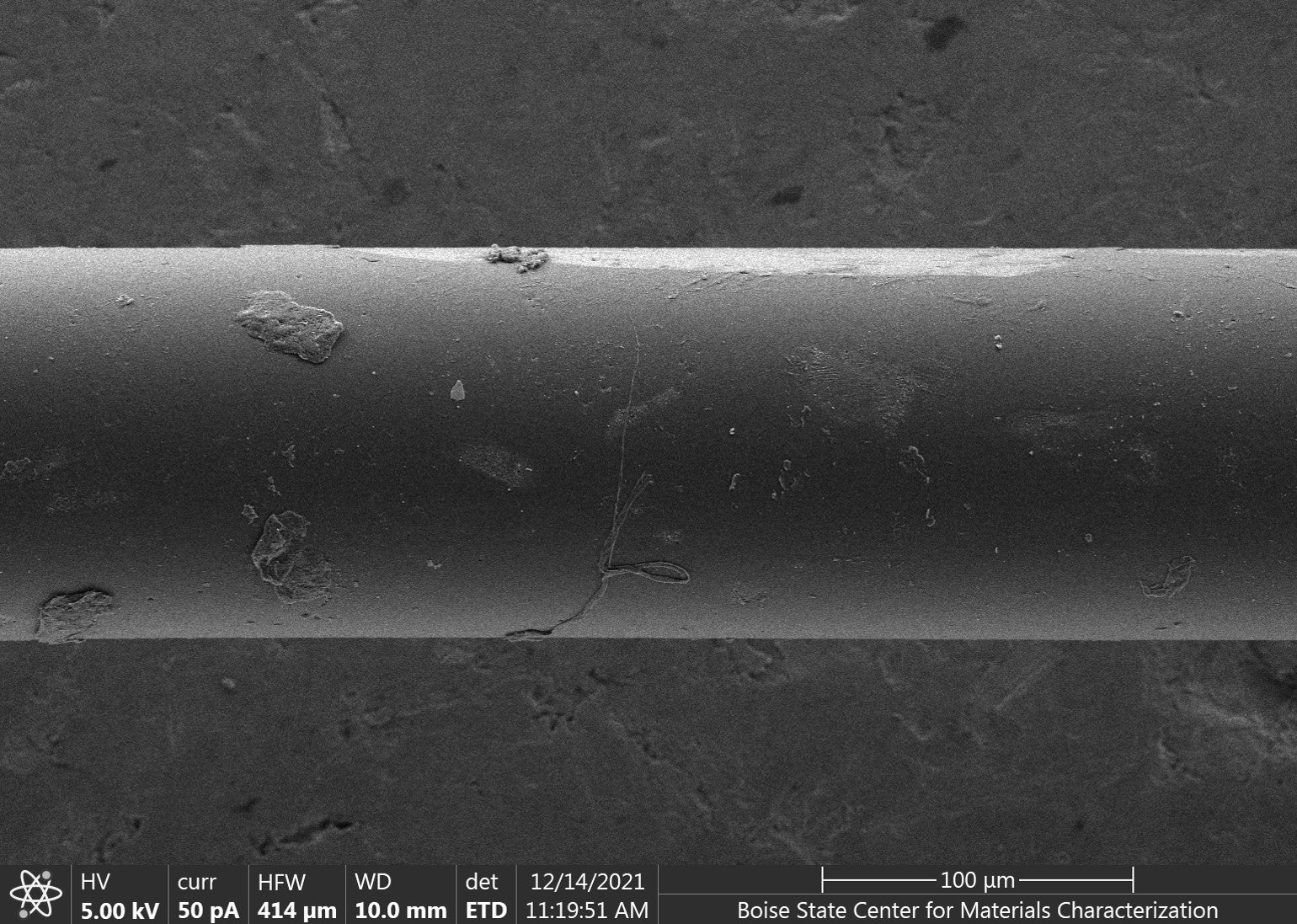Novel Mid IR laser on fibers and chip
Laser sources in the mid-infrared (Mid-IR) region are of great interest in a variety of commercial military and scientific applications. A powerful mid IR laser is a present need in multiple areas such as remote chemical sensing, environmental monitoring, medical diagnostics, laser radar, and molecular spectroscopy. In this project we look at using fs etched type II gratings to create waveguides and fibe Bragg gratings in Mid IR materials such ZnSe, ZBLAN and Chalcogenide fibers. We investigate the potential to create a laser cavity in mid IR bulk and fibers.
Ultrafast Laser ablation of nanoparticles
We seek to create a suspension of nanoparticles through laser ablation of materials or through laser ablation of sample in solution to create nanoparticles of material that are conventionally resistant to Ball milling. We have created novel nanoparticles such as Nickel, titanium and Galfenol. We have an IGEM project investigating these inks as a potential coating for optical fibers.
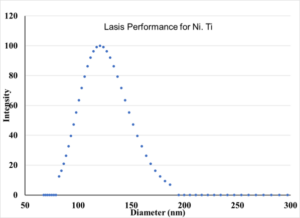
Laser micromachining
Femtosecond laser is utilized to precisely machine materials such as stainless steel and optical fibers to create gratings for acoustic and optical sensors
Thermal Conductivity

Several energy systems, such as nuclear energy and solar thermal energy, utilize particles as a means for energy transfer and energy storage. High thermal conductivity associated with the particle bed is critical for the safety of a nuclear reactor and to ensure high heat transfers rates to the power cycle in solar energy/energy storage. The porosity of the packed bed affects the overall thermal conductivity. The bed porosity is a function of the particle size, shape, and pressure applied to the bed, but consistently varies from ~0.3 to 0.4 for a random packing of uniformly sized particles (as well as for particles of polydisperse size distribution). At our FLAIR Lab, we set up a modulated photothermal radiometry system using a continuous wave laser to measure the thermal conductivity of the packed bed sample. MPTR is a non-contact thermal, non-destructive method to measure conductivity and specific heat in situ. In our work we use it to study the thermal conductivity of a packed bed solar particles to investigate efficient energy transfer. This work is supported by DOE SIPS
Infrared thermography
In a nuclear reactor core, a fuel rod experiences cracking due to rapid changes in the thermal gradient. In a DOE-funded project, we are seeking to develop an instrument that can image the crack in real-time using lock-in thermography for the first time. This is a multidisciplinary project in collaboration with The Ohio State University, Department of Electrical and Computer Engineering, Micron School of Materials Science and Engineering at Boise State, and INL. At the FLAIR lab, we are designing and developing a free-space optical setup to perform lock-in thermography to study the cracking in surrogate fuel materials subjected to large thermal gradients. Ohio State University is modeling the radiation characteristics to determine the optimum experimental conditions. The knowledge gained from the free-space setup will enable us to design an optical fiber bundle-based imaging system that will find practical uses within an actual nuclear reactor. We are currently designing the ideal core size and the number of fibers required to accomplish this task.
Plasma modeling
Microplasmas have been studied for over 25 years due to their interesting properties and for applications in medicine (sterilization, wound healing, skin treatment, cancer treatment, teeth whitening, etc.), material synthesis (especially various nanoparticles, carbon nanomaterials), air purification, plasma displays, and many others. When operated at atmospheric pressure, the microplasmas are characterized by very high electron densities in small volumes in contrast to the popular low-temperature plasmas used in semiconductor processing. The high surface-to-volume ratio also results in high power densities in this non-equilibrium plasma. The classification of microplasmas is very wide based on frequency, power supply, geometry, and other parameters such as micro gap discharges, cathode boundary layer, micro hollow cathode discharges, DBD, microtubes, capacitively coupled or inductively coupled, or microwave micro-discharges, to name a few. My focus here is on micro DBD operated at atmospheric pressure and low frequency (few tens kHz range) with gas flow, as used in commercial plasma printers. Sometimes these are known as plasma jets or plasma pencils. Though available models and plasma diagnostics in the literature sampled above provide us some knowledge about the plasma jet in printing applications, a detailed understanding of the plasma jet carrying ink droplets is not available now but needed for advancing the technology. This work is supported by NASA
Optical Emission Spectroscopy
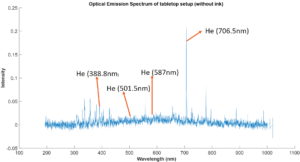
OES of a helium plasma
We use Optical emission spectroscopy to study the signatures of plasma in the novel plasma jet printer. We identify the electron temperature and density using the line ratio method.
Laser Sintering
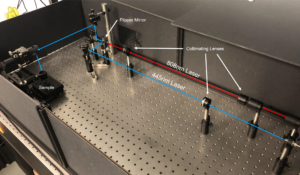
In this project, we study the fundamental physics and laser parameters required to sinter printed nanoparticles. We study the effect of platen temperature, gas environment, and the absorption and heat transfer properties of the material. The work is currently being funded by NASA
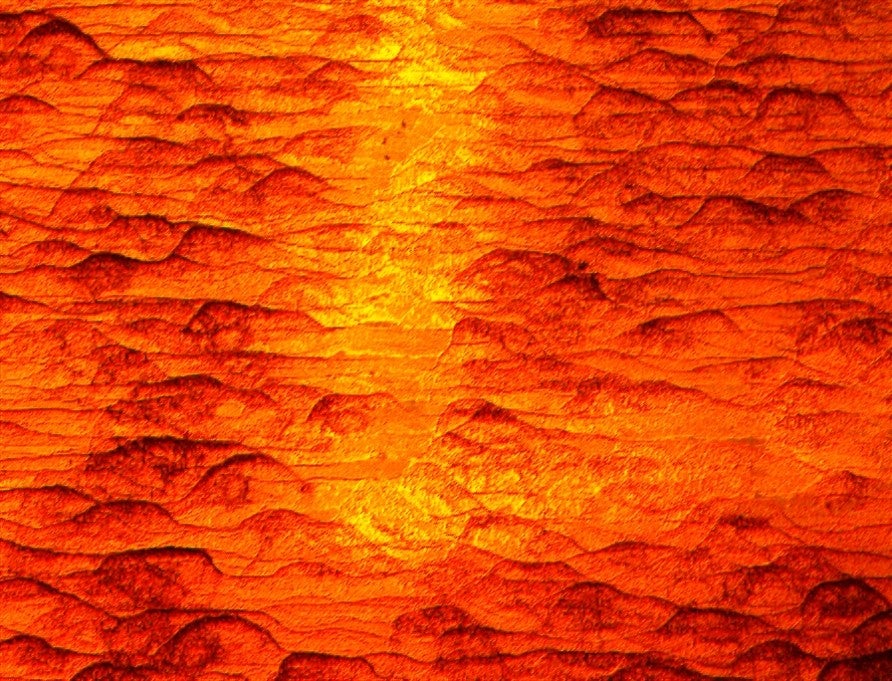
Optical fiber sensors
Our lab focuses on designing conventional, radiation-hardened, and specialty fibers for developing special sensors that can be used for applications ranging from medicine and health monitoring to temperature and structural monitoring in extreme environments.
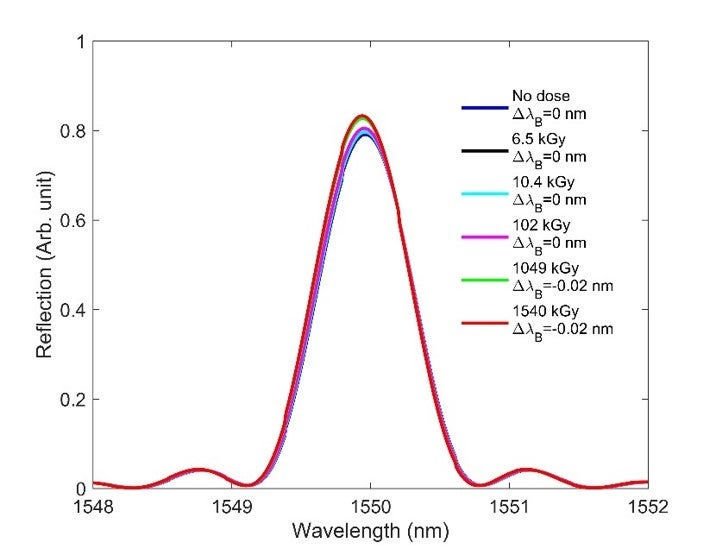
Currently, the group has funding in collaboration with the Idaho National lab .In our research we study how radiation can affect optical fibers when exposed to radiation and how different sensors perform under radiation
Optical fiber Coating
We investigate novel coatings of optical fibers such as silver and nickel that can survive harsh environment.
